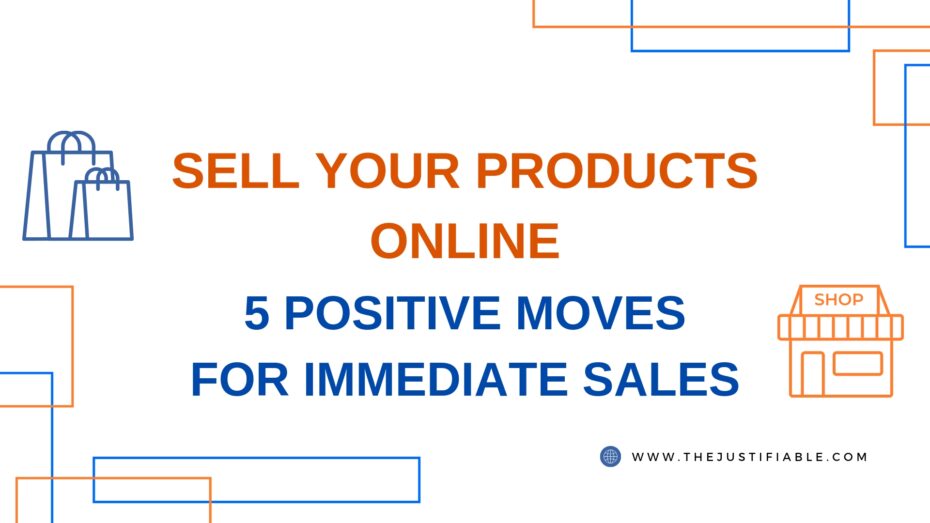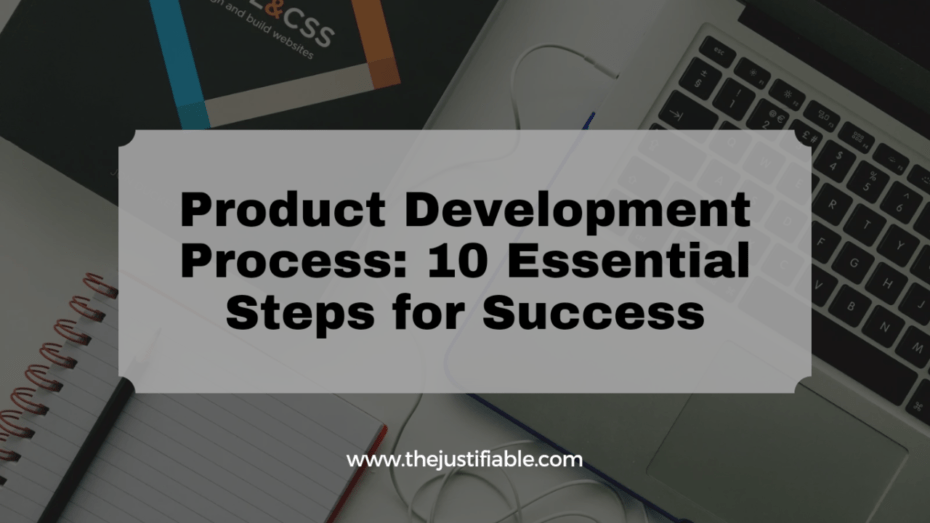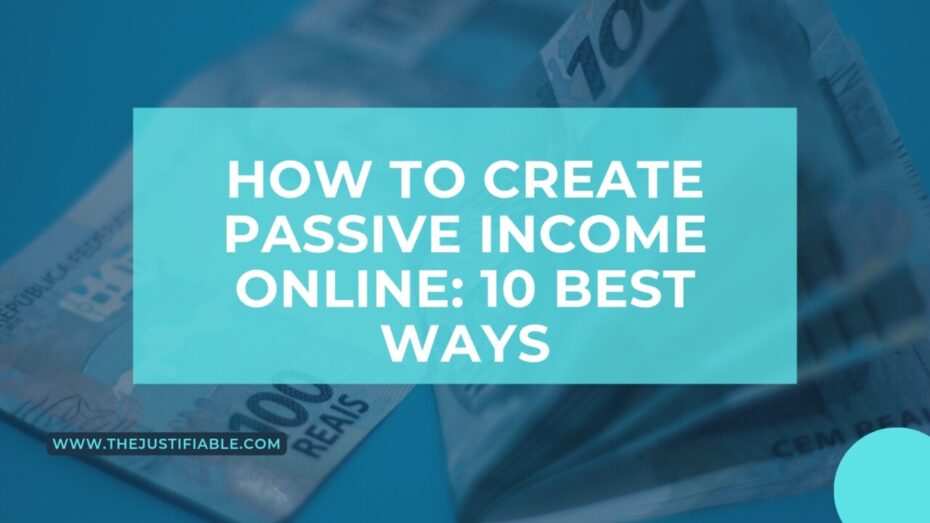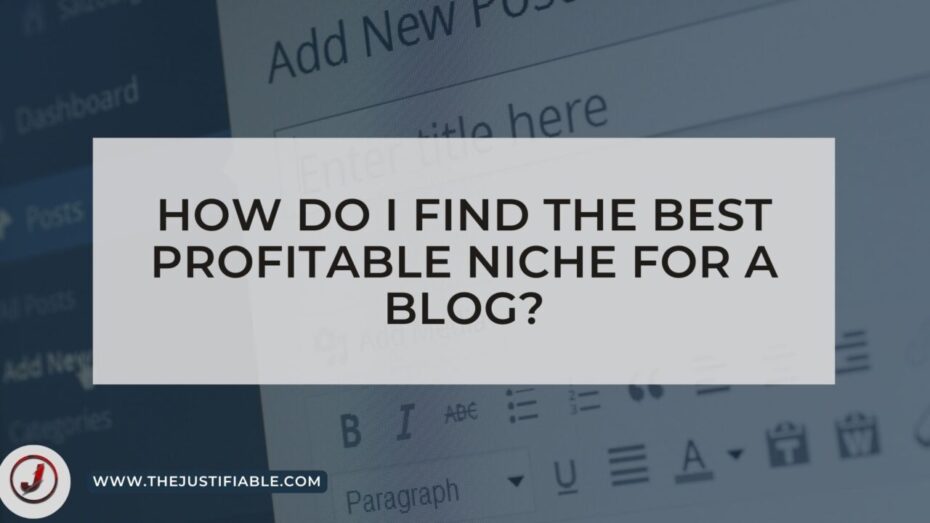Disclosure: This post contains affiliate links, which means that if you click on them and make a purchase, I will receive a commission. Read our Disclaimer for More.
Are you looking to make an immediate impact with your online sales? Do you wonder how you can sell your products online more effectively and see a real increase in your revenue? These questions are at the heart of many entrepreneurs and small business owners’ strategies today. Selling online has become a crucial part of business success, but it can often feel like navigating through a maze without a clear map. This is where we step in to guide you through making five positive moves to boost your sales immediately.
However, embarking on this journey requires more than just understanding the steps; it demands a deep dive into each aspect to tailor them to your unique business needs. Optimizing your online presence to sell your products effectively involves a combination of art and science. From the aesthetics of your website to the analytics behind your traffic, every detail counts towards making those immediate sales a reality.
As we move forward, remember that selling online is about creating value for your customers. It’s about making it easy and enjoyable for them to shop with you. By focusing on these five positive moves, you’re not just looking to make a quick sale; you’re building a foundation for long-term success and customer loyalty. Let’s embark on this journey together, with confidence and a clear plan to sell your products online effectively.
1. Optimize Your Website for Instant Attraction
Did you know that 94% of first impressions on websites are design-related? In the bustling online marketplace, the key to standing out is to sell your products online not just effectively but attractively. Your website is often the first point of contact between your product and potential customers, making its optimization crucial for instant attraction.
Optimizing your website goes beyond mere aesthetics; it encompasses user experience, loading speed, and mobile responsiveness. A well-optimized website invites visitors to stay longer, explore more, and ultimately, make a purchase. By ensuring your site is visually appealing and easy to navigate, you lay the groundwork for a successful online sales strategy. Remember, the goal is to captivate your audience the moment they land on your page, turning their interest into action with a seamless user experience.
Capture Leads with a 60-Second Site Review Strategy
Imagine you only have 60 seconds to convince someone to stay on your website. This is not far from reality, as studies suggest websites have a brief window to make a lasting impression. To capitalize on this, implement a 60-second site review strategy, focusing on quick wins that enhance user experience. Evaluate your site’s clarity, speed, and call-to-action (CTA) placement. Is your value proposition clear within the first few seconds? Can visitors easily navigate to find what they’re looking for?
By adopting this strategy, you encourage visitors to engage deeper with your content, increasing the chances of converting them into leads. Make sure your most compelling content, whether it’s a unique selling proposition or a special offer, is front and center. Simplify navigation and streamline your design to guide users naturally towards making a purchase. Remember, the goal of the 60-second review is to identify areas where small tweaks can make significant impacts on user retention and lead capture.
Boost Your Conversion Rate by 25% with Simple Layout Changes
A staggering number of online sales are lost simply because websites fail to offer an intuitive and engaging shopping experience. Simple layout changes can lead to a dramatic 25% boost in conversion rates. Start by evaluating your current layout’s effectiveness in guiding visitors towards making a purchase. Is your checkout process straightforward? Are your product descriptions and images clear and compelling?
Redesign your website layout to minimize distractions and focus on key elements that drive sales, such as product showcases, testimonials, and clear CTA buttons. Utilize white space effectively to help important content stand out, and ensure your navigation menu is organized logically.
These simple layout changes not only improve the aesthetic appeal of your site but also enhance its functionality, making it easier for customers to find what they need and take the desired action. Remember, the smoother the buying process, the higher the likelihood of converting browsers into buyers.
2. Leverage Social Media for a 30-Day Sales Surge
“Social media is not just an activity; it is an investment of valuable time and resources.” This quote perfectly encapsulates the power of leveraging social media to sell your products online. In today’s digital age, social media platforms are not just communication tools but pivotal in driving sales and increasing brand awareness. A well-orchestrated social media strategy can lead to a significant sales surge within just 30 days.
Understanding your audience is the first step in crafting a social media strategy that converts. Identify which platforms your customers use the most and what type of content resonates with them. This insight allows you to tailor your approach, ensuring your message reaches the right people at the right time. It’s not just about posting regularly but posting with purpose.
Engagement is key to success on social media. It’s not enough to just broadcast your products; you need to interact with your audience. Ask questions, respond to comments, and participate in community discussions. This builds trust and loyalty, which are critical components of converting followers into customers. Remember, social media is a two-way street.
Analytics and metrics play a crucial role in refining your social media strategy. Use data to track what works and what doesn’t, allowing you to adjust your approach in real time. This data-driven strategy ensures you’re always optimizing for maximum engagement and sales. With the right blend of creativity, engagement, and analysis, social media becomes a powerful tool in your arsenal to boost online sales.
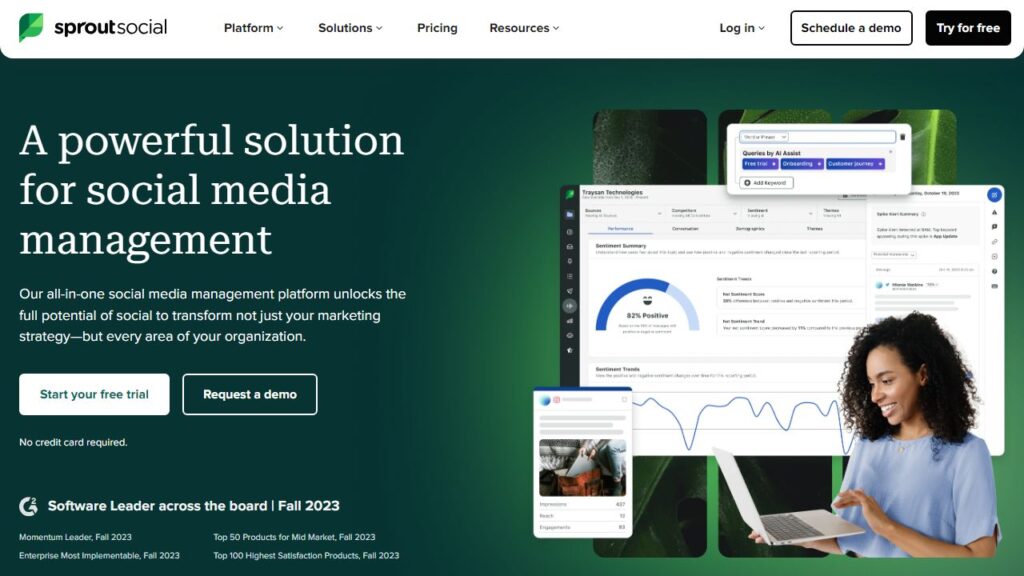

Increase Engagement with Data-Driven Posting Times
Timing is everything on social media. Posting when your audience is most active can dramatically increase engagement rates, which is crucial for driving sales. But how do you find the perfect time to post? The answer lies in analytics. By examining your social media metrics, you can identify patterns that reveal when your followers are most likely to engage with your content.
Once you’ve identified these peak times, tailor your posting schedule accordingly. This strategy ensures that your content reaches the maximum number of potential customers, increasing the likelihood of engagement. Remember, more engagement means more visibility in social media feeds, leading to a wider audience for your products.
It’s also important to consider the type of content you’re posting. Different formats may perform better at different times. For instance, videos might have higher engagement rates in the evenings, while quick reads or product highlights might perform better during midday breaks. Experiment with various content types and posting times to find the best combination for your brand.
Lastly, consistency is crucial. Once you’ve found the optimal posting times, maintain a consistent schedule. This not only helps with audience retention but also builds anticipation for your posts. A consistent, data-driven posting strategy is a powerful way to increase engagement and, ultimately, sales through social media.
Turn Followers into Customers with Exclusive Social Offers
Exclusive offers on social media are like hidden gems for your followers. They not only incentivize purchases but also make your followers feel valued and special. Creating exclusive deals for your social media audience can significantly boost your online sales, as these offers create a sense of urgency and exclusivity.
Start by crafting offers that are too good to ignore and easy to redeem. Whether it’s a limited-time discount, a buy-one-get-one-free deal, or access to exclusive products, your offer should clearly add value to your followers’ experience. Make sure these offers are prominently featured in your posts and stories to grab attention.
Personalization enhances the effectiveness of your offers. Use data from your social media platforms and CRM to tailor offers based on your followers’ interests and past interactions with your brand. This level of personalization makes the offers more relevant and appealing, increasing the likelihood of conversion from follower to customer.
Promotion is key to ensuring your exclusive social offers reach a wide audience. Utilize all aspects of your social media platforms, from posts and stories to live broadcasts, to promote these deals. Engage with your audience through these channels, answering questions and highlighting the benefits of your offer. This interactive approach not only amplifies your reach but also strengthens the connection between your brand and your audience, turning followers into loyal customers.
3. Harness the Power of Email Marketing to Retain Customers
Email marketing is like the Swiss Army knife of digital marketing tools: versatile, reliable, and indispensable for nurturing customer relationships. In the vast digital landscape, it remains one of the most effective ways to sell your products online, retain customers, and build lasting loyalty. This tool, when used correctly, can transform your engagement strategy, turning one-time buyers into lifelong fans.
To harness the power of email marketing, you need to start with a solid list. This list is more than just a collection of email addresses; it’s a community of individuals interested in your brand and what you have to offer. Building this community requires patience and a strategic approach, focusing on quality over quantity. Engage your audience with content that resonates, offers that excite, and messages that feel personal and relevant.
Segmentation is your best friend in the realm of email marketing. By dividing your email list into specific groups based on behavior, preferences, and purchase history, you can tailor your communications to speak directly to the needs and interests of each segment. This personalized approach not only increases the relevance of your messages but also significantly boosts engagement rates.
The key to successful email marketing is consistency and value. Your emails should be more than just sales pitches; they should offer something genuinely useful or interesting to your audience. Whether it’s exclusive insights, helpful tips, or early access to new products, providing value strengthens your relationship with your subscribers, making them more likely to stick around and keep buying.
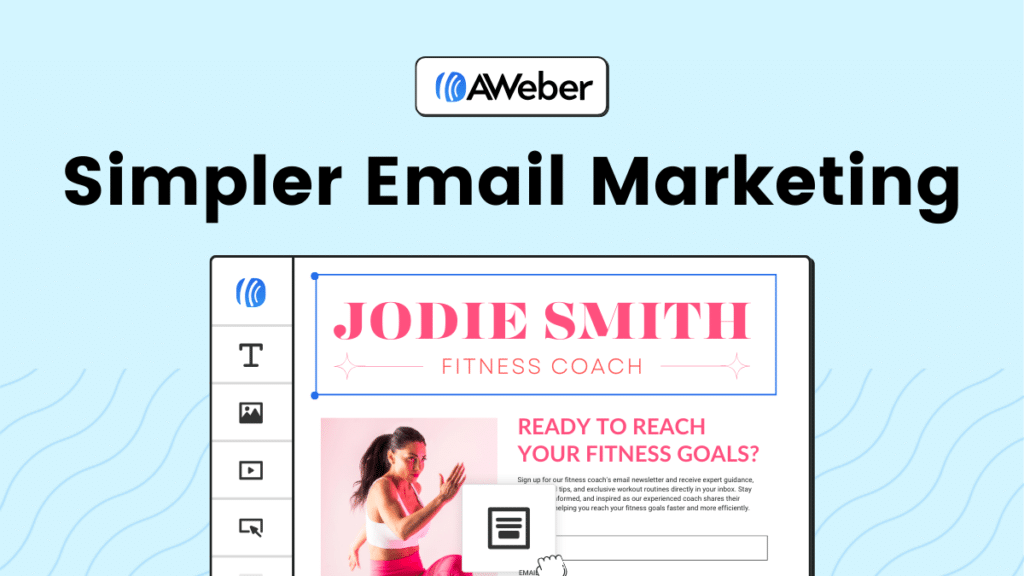

Proven Email Campaigns That Drive Sales in Under a Week
In the fast-paced world of online sales, email campaigns can act as a catalyst, sparking sales in under a week. The secret sauce to these campaigns lies in their ability to catch attention, offer undeniable value, and compel action—all within a short timeframe. Here are five types of email campaigns proven to boost sales quickly: flash sales announcements, limited-time offers, exclusive deals for subscribers, product launch previews, and personalized recommendations.
Flash sales announcements create a sense of urgency, pushing subscribers to make a purchase before time runs out. Limited-time offers, similarly, tap into the fear of missing out (FOMO), encouraging quick decisions. Exclusive deals for subscribers make them feel special and valued, increasing their likelihood to convert. Product launch previews generate excitement and anticipation, leading to pre-orders and early sales. Lastly, personalized recommendations based on past purchases or browsing history show that you understand and cater to their specific needs, making each offer hard to resist.
The effectiveness of these campaigns hinges on your ability to communicate value clearly and concisely. Your subject line should grab attention, your email content should be compelling and to the point, and your call-to-action (CTA) should be unmistakable. Timing also plays a crucial role; scheduling your emails when they’re most likely to be opened maximizes your chances of success.
To truly capitalize on these campaigns, measure and analyze their performance. Track open rates, click-through rates, and conversion rates to understand what resonates with your audience. Use this data to refine future campaigns, continuously optimizing for better results. Remember, the goal is not just to drive sales but to enhance the customer experience, making every email a step towards stronger relationships.
Personalization Tactics to Skyrocket Your Open Rates by 40%
In the crowded inboxes of today, personalization is not just a nice-to-have; it’s a must-have. Tailoring your email content to match the interests and behaviors of your subscribers can increase your open rates by up to 40%. This significant uplift is not just about addressing your subscribers by their first name; it’s about delivering content that feels like it was crafted just for them.
Start with segmentation to categorize your subscribers based on their interactions with your brand. Whether it’s purchase history, website activity, or engagement with previous emails, use this data to create tailored messages. For instance, send product recommendations that complement past purchases or content that aligns with their browsing behavior. This level of detail shows your subscribers that you’re paying attention, fostering a deeper connection.
Dynamic content takes personalization a step further. This technology allows you to change parts of your email content based on the characteristics of each subscriber. For example, you might showcase different products, offers, or articles depending on the subscriber’s interests or past behavior. This ensures that every email feels relevant and personal, significantly increasing the chances of engagement.
Finally, test and refine your personalization tactics. Use A/B testing to experiment with different levels of personalization, from subtle changes like personalized subject lines to more complex content variations. Monitor how these changes affect your open rates and engagement levels, and adjust your strategy accordingly. Remember, the goal of personalization is to make each subscriber feel like you’re speaking directly to them, transforming your emails from just another message in their inbox to a valuable and awaited communication.
4. Utilize SEO to Double Your Online Visibility
Let’s face it, the online marketplace is more crowded than ever. Standing out can seem like a Herculean task, especially for new or small businesses trying to sell their products online. However, the power of Search Engine Optimization (SEO) cannot be overstated. With the right SEO strategies, you can double your online visibility, drawing more potential customers to your website without breaking the bank on advertising.
SEO is all about increasing your website’s visibility in search engine results pages (SERPs). It involves optimizing various elements of your site so that search engines like Google can easily understand and rank your content. The higher your rank, the more likely people are to find your site. But SEO is not just about keywords; it’s about creating a better user experience, from faster loading times to mobile optimization and high-quality content.
To start, focus on understanding your target audience and what they are searching for online. This involves keyword research, which allows you to identify the terms and phrases potential customers use when looking for products or services like yours. Incorporating these keywords naturally into your content, meta descriptions, and titles can significantly improve your rankings and draw more traffic to your site.
Remember, SEO is a marathon, not a sprint. It requires patience, as results don’t happen overnight. However, the investment is well worth it. By creating a user-friendly website that ranks higher in search results, you not only enhance your online visibility but also build credibility and trust with your audience. Consistently applying SEO best practices can transform your website into a powerful tool that attracts and retains customers.
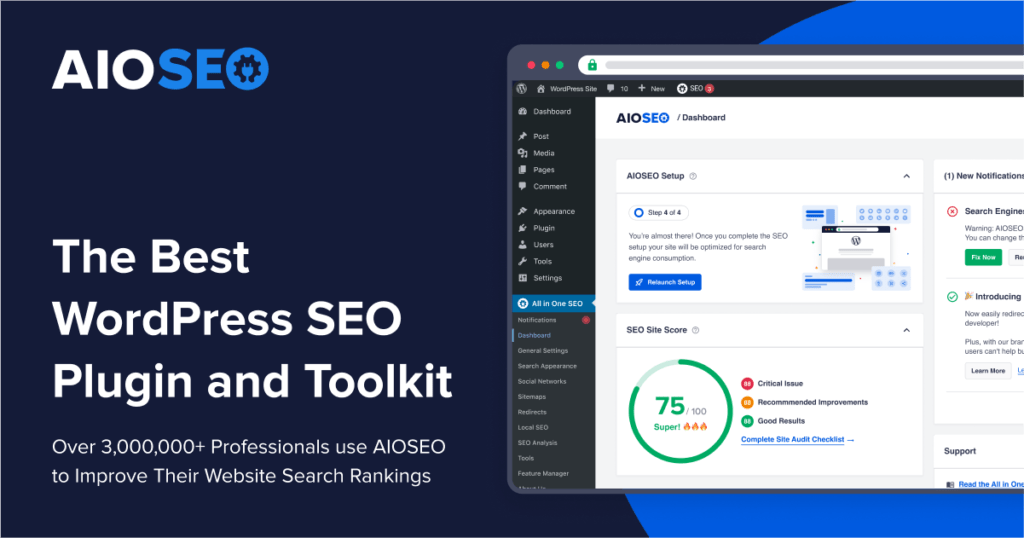

Keyword Optimization: Your Secret Weapon for Top Google Rankings
Keyword optimization is the cornerstone of effective SEO and your secret weapon for achieving top Google rankings. It’s about more than just sprinkling popular terms throughout your content; it involves a strategic approach to incorporating relevant keywords that align with your audience’s search intent. This not only helps search engines understand your site but also ensures that the traffic you attract is genuinely interested in what you have to offer.
Start by conducting thorough keyword research to identify terms that are both relevant to your business and actively searched for by your target audience. Tools like Google’s Keyword Planner or Semrush can provide insights into search volumes and competition levels. Once you’ve identified your target keywords, the next step is to incorporate them naturally into your website’s content, titles, headings, and meta descriptions.
However, keyword stuffing, or overloading your content with keywords, can harm your rankings. Search engines are sophisticated enough to recognize and penalize this practice. Instead, focus on creating valuable, informative content that seamlessly integrates your keywords. This not only improves your SEO but also enhances the user experience, encouraging visitors to spend more time on your site.
Lastly, keep an eye on your rankings and adjust your strategy as needed. SEO and keyword optimization are ongoing processes. As search algorithms evolve and competition changes, you’ll need to continually refine your approach to maintain and improve your rankings. Remember, the goal is to connect with your target audience by providing them with the content they’re searching for in the most accessible way possible.
On-Page SEO Strategies That Attract Organic Traffic
On-page SEO is your toolkit for making your website more visible and attractive to both search engines and users. It encompasses a range of strategies designed to optimize individual web pages, making them more likely to rank higher in SERPs and attract organic traffic. From content quality and keyword optimization to user experience and mobile-friendliness, each element plays a crucial role in your site’s overall SEO performance.
First, ensure that your website’s structure is search engine friendly. This means having a clear, logical layout, fast loading times, and mobile optimization. With the majority of web traffic now coming from mobile devices, a mobile-friendly website is no longer optional. It’s also essential to use HTML tags to highlight headings and subheadings, making it easier for search engines to understand the structure of your content.
High-quality, original content is another critical component of on-page SEO. Your content should provide real value to your audience, addressing their needs and questions. Use your target keywords naturally within your content to improve its relevance and visibility. Additionally, regularly updating your website with fresh content can signal to search engines that your site is active and relevant, further boosting your rankings.
Internal linking is another powerful on-page SEO strategy. By linking to other pages on your website, you help search engines discover new content and understand the relationship between different pages on your site. This not only improves your site’s SEO but also enhances user experience by making it easier for visitors to navigate and find related content.
Implementing these on-page SEO strategies can significantly improve your website’s search engine rankings and attract more organic traffic.
5. Invest in Paid Advertising for Immediate Impact
Believe it or not, the fastest way to get your product in front of your ideal customer might not be through organic growth strategies at all. It’s through paid advertising. This statement often sparks controversy among traditional marketers who swear by the slow and steady growth of organic reach. However, in today’s fast-paced digital world, investing in paid advertising can be the game-changer you need to sell your products online effectively and see an immediate impact on your sales.
Paid advertising, including pay-per-click (PPC), social media ads, and display campaigns, allows you to target your audience with precision never before possible. With advanced targeting options, you can reach potential customers based on their interests, behaviors, demographics, and even their search intent. This means your ads are shown to those most likely to be interested in your products, making every dollar you spend more effective.
The beauty of paid advertising lies in its flexibility and measurability. You can start small, test different approaches, and quickly adjust your strategy based on real-time feedback and analytics. This agility enables you to optimize your ad spend and maximize your return on investment (ROI) with much more control than traditional advertising methods. Whether you’re looking to boost brand awareness, drive traffic to your website, or increase sales, paid advertising offers a scalable solution to achieve your goals.
However, diving into paid advertising without a clear strategy can be like throwing money into a black hole. It requires careful planning, ongoing optimization, and a deep understanding of your target audience. By approaching paid advertising with a strategic mindset and leveraging the available tools and analytics, you can create impactful campaigns that drive immediate results and contribute to your long-term business success.
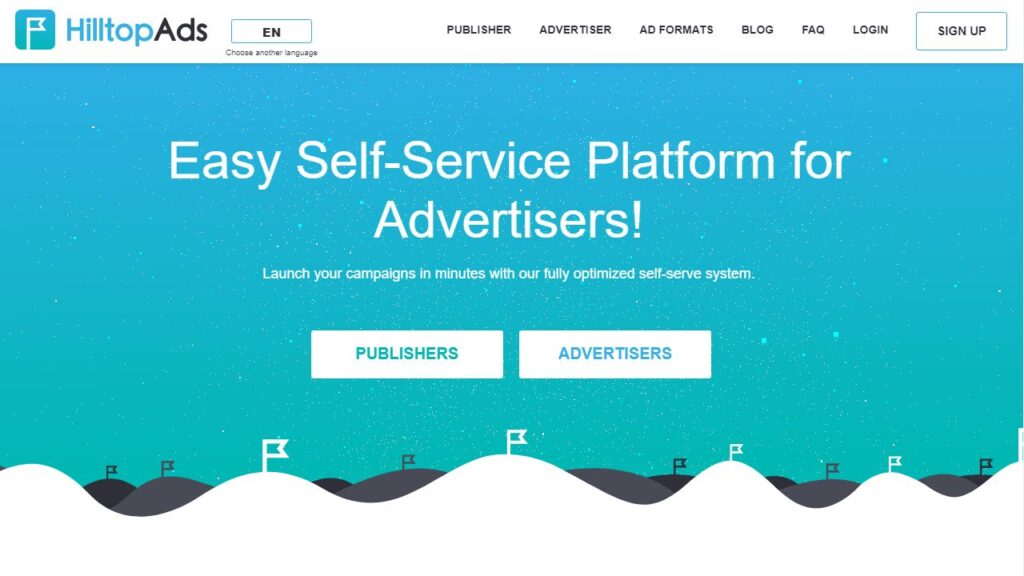

Decoding PPC: Maximize ROI with Targeted Ad Campaigns
Pay-per-click (PPC) advertising is often hailed as the cornerstone of successful online marketing campaigns. Yet, it’s not just about setting up ads and watching the clicks roll in; it’s about crafting targeted ad campaigns that resonate with your audience and deliver measurable results. Decoding the complexities of PPC can unlock a powerful tool for businesses looking to sell their products online and achieve a high return on investment.
The first step in maximizing ROI with PPC is understanding your audience. Detailed keyword research helps identify the terms your potential customers are using to find products like yours. By targeting these specific keywords in your PPC campaigns, you can ensure that your ads are displayed to users with a clear intent to purchase, significantly increasing the likelihood of conversions.
Another critical aspect of PPC is crafting compelling ad copy. Your ads need to stand out in a crowded digital landscape, offering clear value and a strong call to action (CTA). Test different headlines, descriptions, and CTAs to determine what resonates best with your target audience. Remember, even small changes in your ad copy can lead to significant improvements in click-through rates and conversions.
Ongoing optimization is the key to PPC success. Regularly analyze your ad performance, adjusting bids, targeting options, and ad creative based on data-driven insights. This iterative process allows you to refine your campaigns continuously, ensuring that your advertising budget is being spent in the most effective way possible. By staying agile and responsive to performance metrics, you can steer your PPC campaigns toward maximum ROI and impactful sales growth.
A/B Testing: The Fast Track to Ad Success
A/B testing, or split testing, is the marketer’s secret weapon for optimizing paid advertising campaigns. It’s a simple yet incredibly effective way to compare two versions of an ad to see which performs better. By making slight variations in your ad’s design, copy, or targeting and analyzing the results, you can make data-driven decisions that significantly improve your ad’s performance.
The beauty of A/B testing lies in its simplicity. Start with one variable at a time—be it the headline, image, or CTA—and create two versions of your ad. Run them simultaneously to a similar audience segment and measure which one achieves better results. This methodical approach removes guesswork from the equation, allowing you to refine your ads based on actual user responses.
A/B testing not only improves the effectiveness of your current campaigns but also provides valuable insights for future ones. By understanding what appeals to your audience, you can craft more compelling ads that resonate and convert. Whether it’s discovering the most click-worthy headlines or the most engaging ad formats, A/B testing guides your advertising strategy toward higher engagement and conversion rates.
Consistency in A/B testing is crucial. It’s not a one-off tactic but a continuous process of improvement. Regular testing and optimization cycles ensure that your advertising efforts remain effective over time, adapting to changes in consumer behavior and market trends. With A/B testing as a fundamental part of your advertising strategy, you’re on the fast track to ad success, maximizing impact and ROI in your paid campaigns.
Overcoming Common Challenges: Tips to Sell Your Products Online
Are you struggling to increase your online sales despite putting in a lot of effort? Do you find navigating the digital marketplace to sell your products online more challenging than you anticipated? These are common hurdles many online sellers face, but with the right strategies, they can be overcome. This section is dedicated to helping you navigate through these obstacles and providing practical tips to enhance your online sales process.
Selling products online comes with its set of challenges, from attracting the right customers to converting them into sales. One key to overcoming these challenges is understanding the customer journey from start to finish. By identifying where your potential customers drop off or lose interest, you can implement targeted strategies to keep them engaged. This might involve optimizing your product pages, improving your SEO tactics, or leveraging social media marketing more effectively.
Another common issue is creating a seamless user experience on your website. This includes having a fast-loading site, mobile optimization, and intuitive navigation. Customers today have high expectations for online shopping experiences. If your site is slow, difficult to navigate, or not optimized for mobile devices, you’re likely to lose potential sales. Investing in your website’s performance and usability can significantly impact your ability to sell your products online successfully.
Trust and credibility are also vital factors in converting visitors into buyers. Including customer reviews, detailed product descriptions, and transparent pricing information can help build trust with your audience. Additionally, ensuring your site is secure and displaying security badges can reassure customers that their personal and payment information is safe. Building a strong brand presence online, through consistent content and engaging with your audience, can also enhance your credibility and attract more customers.
Lastly, understanding and leveraging the power of data analytics can provide you with insights into your customers’ behavior and preferences. This data can guide your marketing strategies, product development, and overall business decisions, leading to more effective ways to sell your products online. Regularly reviewing your analytics and adapting your strategies accordingly can help you stay ahead of the competition and meet your sales goals.
Navigating Payment Gateway Hurdles for Smoother Transactions
One of the technical challenges of selling products online is integrating a reliable and user-friendly payment gateway. Have you ever wondered why some customers abandon their carts at the last minute? Often, the complexity or perceived insecurity of the payment process is to blame. So, how can you ensure that your payment gateway supports rather than hinders your sales?
First, choose a payment gateway that is widely recognized and trusted by consumers. This can significantly reduce the hesitation new customers might feel when entering their payment details. Look for gateways that offer multiple payment options, including credit cards, PayPal, and other digital wallets, to accommodate the preferences of a broader audience.
Security is paramount when handling online transactions. Ensure that your payment gateway complies with the latest security standards, such as PCI DSS, to protect sensitive customer information. Displaying security certificates and badges prominently on your checkout page can also reassure customers and reduce transaction abandonment.
Simplicity in the checkout process is another crucial element. A complicated or lengthy checkout can frustrate customers and lead to cart abandonment. Streamline the process as much as possible, minimizing the number of steps and required information. Offering guest checkout options and saving customer information for future purchases can also enhance the user experience and encourage repeat business.
Finally, monitor and analyze the performance of your payment gateway. Keep an eye on metrics such as abandonment rates at the payment stage, transaction errors, and customer feedback related to payments. This ongoing analysis will help you identify any issues early and make necessary adjustments to ensure your payment process is as smooth and frictionless as possible, supporting rather than obstructing your online sales efforts.
Combating Cart Abandonment with Strategic Checkout Design
Cart abandonment is a pervasive issue for online retailers, with many potential customers leaving their carts before completing a purchase. But what can you do to keep shoppers from walking away? The answer often lies in the design and functionality of your checkout process.
A clear and concise checkout process is essential for keeping potential customers on the path to purchase. This starts with eliminating any surprises, such as hidden costs or fees, that might appear at the checkout stage. Transparency about shipping costs, taxes, and any additional fees from the beginning can prevent customer shock and abandonment at the checkout stage.
Offering a variety of payment options can also reduce cart abandonment. When customers can use their preferred payment method, they’re more likely to complete their purchase. Additionally, implementing security measures, such as SSL encryption and displaying security badges, reassures customers that their personal and payment information is safe, making them more comfortable completing their purchase.
Personalization can further enhance the checkout experience. By remembering returning customers and allowing them to check out faster with saved information, you create a smoother transaction process. This, combined with the option for customers to easily modify their cart contents or navigate back to the store without losing their cart information, can significantly improve the checkout experience.
Crafting a Stellar Customer Experience to Foster Loyalty
Creating a memorable customer experience is key to transforming first-time buyers into loyal customers. Start by personalizing your communication. Sending a personalized thank-you email can make your customers feel valued and enhance their connection with your brand. It’s these small gestures that leave a lasting impression and set the tone for a long-term relationship.
Beyond the purchase, consider how you can continue to engage with your customers. Implementing a loyalty program or offering exclusive discounts to repeat customers can incentivize them to keep coming back. Additionally, soliciting feedback through surveys or direct communication shows that you value their opinion and are committed to improving their experience. This feedback loop not only helps you refine your offerings but also strengthens customer trust and loyalty.
Social media platforms offer another avenue to deepen relationships with your customers. By actively engaging with them on social media, responding to comments, and sharing relevant content, you can keep your brand top of mind. These platforms also provide an opportunity to showcase your brand’s personality and values, further aligning with your customers’ interests and strengthening their emotional connection to your brand.
Lastly, never underestimate the power of exceptional customer service. Being proactive, responsive, and helpful in addressing any concerns or questions can turn a potentially negative experience into a positive one. Excellent customer service not only resolves immediate issues but also demonstrates your commitment to your customers’ satisfaction, encouraging them to remain loyal to your brand.
Analyzing Sales Data for Continuous Improvement
Your first sale provides valuable data that can inform your future business decisions. Analyzing this data can uncover insights into customer behavior, product preferences, and the effectiveness of your marketing strategies. Look at which channels drove the most traffic to your product page and which marketing messages resonated most with your audience. This information can help you refine your marketing efforts and allocate your budget more effectively.
Understanding the customer journey that led to the sale is also crucial. Identify the touchpoints that had the greatest impact and consider how you can optimize them for future customers. For example, if most of your traffic came from a specific social media platform, you might decide to increase your activity or advertising budget there.
Product feedback and reviews are another valuable source of information. They can provide insights into what your customers like about your product and areas for improvement. Use this feedback to refine your product offerings and address any common concerns. This not only improves your product but also shows your customers that you are listening and committed to providing high-quality offerings.
Finally, consider the broader trends that your sales data may reveal about your market and industry. Are there particular times of year when demand increases? Are there emerging trends that you can capitalize on? Staying attuned to these trends and adapting your strategy accordingly can help you stay ahead of the competition and continue growing your online sales.

